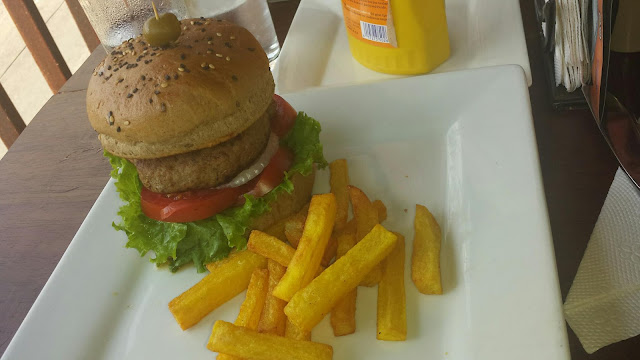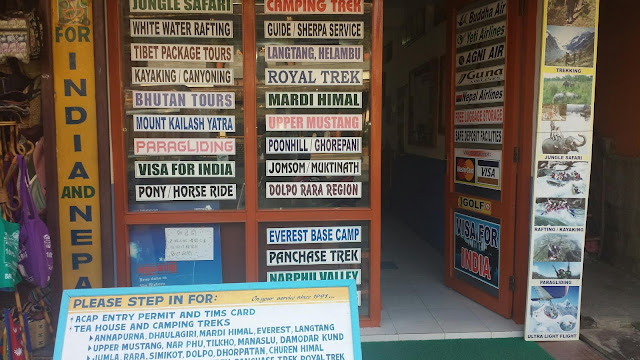The
Taj Mahal was built by Shah Jahan, the fifth Mughal emperor of India, to honour his favourite (of three wives) wife, Mumtaz Mahal. When she died in 1631, he commissioned the mausoleum to be built, and the entire complex, outbuildings and surrounding walls took 22 years, 20,000 full time workers, 1,000 elephants and over $827 million dollars in today's money.
Showing the girls this fantastic world wonder was a dream come true.
We woke up early, skipping breakfast, and drove through the much quieter streets of Agra. It felt like the night after a huge party in the streets. The idea was to get there early to avoid most of the crowds, but also to see the monument in the early morning light.
Even though the story goes that it was built solely as a burial place for his wife, it's widely suspected that an even bigger motivation was a huge show of power. By building a monument so big and so great, using so many resources, he would strike fear into the hearts and minds of enemies and potential enemies.
I forced Abby to replicate one of the many cheesy shots you see all of the tourists doing here. "Don't post that!"
The Taj completely overshadows the incredibly buildings that surround it, including the main gate.
As the sun came up, the colours on the marble changed to a warm yellow. You can see the scaffolding on the back right minaret here. There is a continual cleaning process that the foundation that takes care of the place undertakes. They use a natural mud, applying it and letting it dry, then gently washing it off to bring the natural white colour of the marble back. Pollution used to be a big concern here, as they noticed smog and acid rain were affecting the colour of the marble. Since then, they've banned all factories and industrial work for four thousand square kilometres around the area to protect it for many years to come.
Another cheesy shot, the sunglasses reflection picture :-).
The view from the main deck of the mausoleum towards the entrance gate is really nice, highlighting the beautiful gardens and fountain pools between.
A close inspection of the building really shows how amazing the detail is. The scriptures from the Koran that frame the entrance are all made of single pieces of obsidian that were carved then inlaid into the marble. There were huge pieces of marble that had many hexagonal holes carved into them, and I wondered how many pieces had been broken before they finally got them right.
The interior of the mausoleum is relatively dark, with just one electric bulb set up that hangs over the crypts. The bodies of Mumtaz Mahal and later Shah Jahan were finally laid to rest in the closed lower level of the Taj. On the main floor, there are two false crypts that lay in the exact same position - Mumtaz Mahal in the exact center of the perfectly symmetrical building, and the Shah beside her.
Some of the precious and semi precious jewel inlaid walls have been damaged over the years, with thieves and Brits removing the stones. The Brits even removed the gold metal tops of the towers and minarets and replaced them with metal replicas. Even still, the inlays that remain are beautiful.
Back outside, our guide, Rahul, took us to an area of the garden where we had yet another different take on the building, which shone pure white in the sun that had now made its way higher into the sky.
I really got a thrill out of seeing the girls take it all in. We've been to some famous, beautiful sites on this trip, but I don't think there's a building that's more iconic than the Taj Mahal (just edging out the Eiffel Tower in my opinion). It's really something that you see in person and realize that the pictures did not capture the huge scale and pure beauty of the place. Abby said she would have to come back here in the future, which made me smile.
We returned to the hotel for breakfast and some R and R. There was a really nice pool on the roof, so the girls "took it for advantage" as they say.
At around 10:30, we met Rahul and Uday outside the hotel, and it was now time to check out a couple of the other points of interest in Agra. First up, the beautiful
Agra Fort. The Fort Was built, expanded and fortified over many years. It's really a small city, covering over 94 acres, but only 15% of it is open to the public as it is still used by the Indian military.
One of the cool things in the Fort was the mix of religious symbols and architectural features that shows how tolerant of different cultures the leaders of the time were. Much of the area we saw was renovated by Shah Jahan, and it showed - it was stunning.
One of the courtyards was built for his Hindu wife, and it had loads of ornate, Hindu style carvings out of the Red sandstone that is indigenous to the area surrounding Agra.
One of the most outstanding features of the Fort is its location - it hugs the Yamuna River, and is in an ideal spot overlooking the Taj Mahal.
From a distance, the Taj yet again transforms - from here it looks like a pure Islamic building, with the many domes of the main structure and outbuildings all mixing into one. It almost looked like a black and white version of St Basil's Cathedral in Moscow from this angle.
Rahul was great in pointing out many of the nuances of the building. There's a real mix of Islamic and Hindu architecture, with a smattering of Jewish, Buddhist and Christian symbols thrown in for good measure. Abby took this great picture showing a really nice Hindu archway.
The area where Shah Jahan lived with his two other wives was all constructed using white marble.
To solidify his power and make sure there would be no question of succession, he killed his two older brothers, and put his father under house arrest for eight years until he died.
The inner grounds where all of the harem women stayed were for entertaining. They also grew grapes here for making wine, which is kind of hard to believe given the climate, but when you're that rich, I think you can just make it happen. Evidence of that: there are hollow parts behind the walls of the main palace that were used for air conditioning in the summer - they would be continually filled with cold water by servants, then drained and refilled when the water got warm. Wow.
Before lunch, we stopped by a shop that does marble inlay work. It was cool to see the process of how they got the semi precious stones shaped, assembled into a design, traced and cut into the marble, glued then polished smooth. A lot of the pieces in their store were really nice, but they didn't really go with anything so we passed. It was time for lunch! We went to the same place as last night and feasted to over-full.
After saying goodbye to Rahul, we continued in the car with Uday, back through the city and across the bridge, to visit the
Tomb of I'timād-ud-Daulah, more easily and commonly known as Baby Taj. The building is another mausoleum, and it's quite beautiful, though unfair to compare after seeing the Taj in the morning. Where they could really use some work here is on the grounds and surrounding area. I was surprised given how long this area has been a massive tourist attraction that the government hadn't made a better effort.
The interior of the mausoleum was not lit, but the ceiling was quite beautiful.
It was time to head back to Deli and close out this leg of our trip. Uday and I chatted most of the four hour drive to the nations Capitol. We were so happy to have him - it was a really nice way to spend these two days - safe, secure, effecient and great company. Of course, no road trip would be complete without some awkward car dozing pics...
Beth insists she was just staring out the top of the window the while time, but I've seen this move many times....
You know, India, like many places in the world, is a country that thrives on tourism. The country is so big that it has the luxury of not "depending" on it. There are always stories about bad things that happen, threats from home or abroad, natural disasters and more than can easily cause a dramatic drop in tourism - I'm sure we'll see more direct evidence of that in Nepal. You really do have to wade through the negativity, plan and take precautions accordingly, then look for the joys that travel can bring.
We have had an amazing time in India, and being taken care of by Uday these last two days, and learning from him, it has really hit home to Beth and I what an incredible country this is. Yes, it has 1.2 billion or so people so it can feel crowded and a little crazy at times... But within all that there is a vibrant county of countries with fabulous personalities, food and sights that are unlike anywhere in the world. With India, you can have many different kinds of experiences, largely dependant on how much money you want to spend, and how much you want to put yourself out there and interest rather than overview with the people. We spent the right money in the right places and made an effort to meet people and engage, and I think the girls have had a very positive experience here.
We will be back to this amazing country sooner than later.






















































